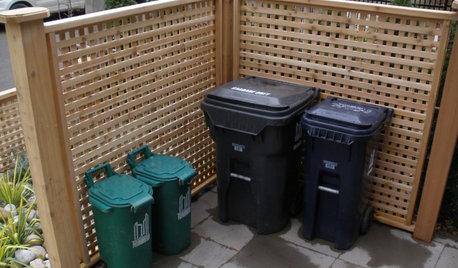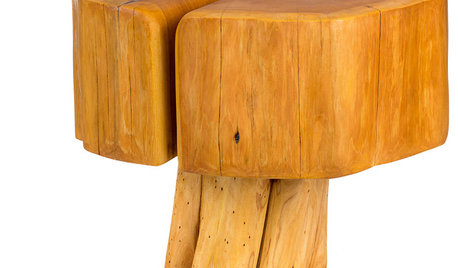A little off topic, but can we talk about vermicomposting?
perennialfan275
4 years ago
Featured Answer
Comments (31)
armoured
4 years agoRelated Discussions
Anything You Wanna Talk About V - Prolly Mostly Off-Topic
Comments (150)Thank you, Laura... such wonderful sentiments! :-) Our weather has been crazy, too... but we half expected it. Last year, we were already laying out soaker hoses and starting to water...and this year, we've gotten so much rain that we're completely saturated! We're just now able to get in and cut grass, and talk about tall! It's hard on the mowers, I'm sure, but what can you do?! If it's grass, it has to be kept mowed at least semi-regularly... and if it's garden beds, they must be kept weeded or the grasses, thistles and other nasties take over! So, we're darned if we do and darned if we don't! Mother's Day was nice... calls from my kids, and the husband made a nice dinner... while I spent the day relaxing, for the most part. There are certain chores that must be done regardless of what day it is, like cleaning and feeding dogs and other animals, but that's no big deal... I have it down to a science! ;-) I finally got the old guy to help me get photos off my camera, so I thought I'd share a few this morning... Here's a mama and her twins... My very best mouser... I call her Vixen! The next generation of excellent mousers... one of Vixen's 3 little ones... Walking from the shade garden area toward the new rose arbor... A young Peony Tree in the dappled shade garden... notice the rambler rose runners everywhere on the ground! Closeup of the flower from the Peony Tree... Another Peony Tree in the front yard... north side... And this is a Trillium that opened white and is turning a pale pink shade. It's among a patch of purple flowered hybrid Trillium I planted several years ago... you can see the mottled leaves of the hybrid... I didn't plant the white one, though... And finally, the first of the Irises are starting! I hope you enjoyed a walk around the yards with me... stick around as all the roses begin blooming and other perennials begin to color the gardens a wonderful rainbow of scented color! Thanks, Al... I can finally view Youtube, but the monitor I'm using has no sound on board... for a girl with a technological genius as a husband, I'm always the last to get upgraded! Would you believe I'm still using Windows XP?! I desperately need an upgrade to Windows 7, which should be coming shortly... when he has time to upgrade me. :-) It's kind of like being the plumber with the leaky toilet handle that sticks, or the barber that doesn't have time to cut his own hair... when you're in the business, you're last in line! :-) It looks to be another gorgeous day... sunny and hot with strong humidity... I may spend some time weeding and edging today, instead of killing myself cutting grass! Hope everyone has a lovely day! And... Happy Gardening!...See Morebig problem but a little off topic
Comments (7)I would file a written complaint with the county health department. I'd probably make sure to get a signed statement acknowledging their receipt of it. Here's some info for you on how to handle things. (OSSF stands for On Site Sewage Facility.) This info was taken from the Texas Commission On Environmental Quality. (Link below) "How do I file a complaint against a property owner who is operating a malfunctioning OSSF? Complaints regarding malfunctioning OSSFs need to be filed with the local permitting authority. If the local permitting authority is not resolving the complaint in a timely fashion, notify the permitting authority's supervising authority (county judge, county commissioner, mayor, aldermen, boards, water program manager, etc.). If the complaint is still not resolved within a reasonable time, contact the appropriate TCEQ regional office." Here is a link that might be useful: Texas Commission On Environmental Quality...See MoreSorry off topic just gotta rub it in a little
Comments (12)As Bob shared the Forum previously was more strict than it is today, and we have no active moderator so we have to monitor ourselves. If we fail to keep postings on-topic over time the Forum would become diluted, or could become more of a social site. This is one of the reasons the separate Conversations side was created some years back. Our continuing effort to stay on-topic goes hand-in-hand with other accepted ideals as to participation; i.e. to avoid chat room formats by keeping information together on an existing thread rather than starting a new thread with additional input, and not hijacking a thread into a different direction. Though admittedly at times a thread does take on a life of its own. I am a member of a couple of computer help forums where the off-topic area is more active than the computer dedicated area. There is absolutely nothing wrong with that as I do like stopping in on occasion and sharing a few moments, but if you lumped both together the computer help would suffer, and that is why we are here. DA...See MoreA little off topic
Comments (150)My kitchen reno is happening in my transplanted home in a suburb of St. Louis (Metro-East=Illinois side) My heart is in Almost Heaven, Always Home, West Virginia! GOOOOO! MountainEEEERs!...See Moreperennialfan275
4 years agoarmoured
4 years agoperennialfan275
4 years agoarmoured
4 years agolast modified: 4 years agoannpat
4 years agoannpat
4 years agoarmoured
4 years agoannpat
4 years agoarmoured
4 years agoNevermore44 - 6a
4 years agotsugajunkie z5 SE WI ♱
4 years agoJay 6a Chicago
4 years agoarmoured
4 years agoperennialfan275
4 years agoarmoured
4 years agoannpat
4 years agoperennialfan275
4 years agoarmoured
4 years agolast modified: 4 years agoannpat
4 years agoNevermore44 - 6a
4 years agoperennialfan275
4 years agolast modified: 4 years agoarmoured
4 years agoannpat
4 years agodocmom_gw
4 years agoarmoured
4 years agoannpat
4 years agoarmoured
4 years agoRysanna 8b
4 years agosharon2079
4 years ago
Related Stories

THE POLITE HOUSEThe Polite House: What Can I Do About My Neighbors’ Trash Cans?
If you’re tired of staring at unsightly garbage way before pickup day, it’s time to have some tough conversations
Full Story
DECORATING GUIDESExpert Talk: Designers Open Up About Closet Doors
Closet doors are often an afterthought, but these pros show how they can enrich a home's interior design
Full Story
PETSWhat Chihuahuas Can Teach Us About Interior Design
Who knew these tiny dogs could be such a huge fount of design tips? Houzzers did
Full Story
HOME TECHWhat Chipotle and Radiohead Can Teach Us About Sound Quality at Home
Contemporary designs filled with glass and concrete can be hostile environments for great sound quality. Here's how to fix that
Full Story
WORKING WITH PROSHow to Talk About Your Style With Home Pros
Use these checklists and ideas to help your designer understand the looks you love
Full Story
PRODUCT PICKSGuest Picks: Beautiful Things You Can Feel Good About Buying
Upcycled, ecofriendly or just made responsibly, these home accessories and furniture pieces will keep your conscience clear
Full Story
DECORATING GUIDESExpert Talk: 14 Designers Show Their Stripes
Painted stripes can create huge impact in a room for little cost. See how and why these professionals gave 14 rooms their stripes
Full Story
LIFESlow Living 101: Tips for Turning Off the Chaos
It may feel as though you're too busy to slow down and enjoy life. But even little changes can have a big effect
Full Story
ORGANIZINGThe 5 Decisions That Can Lead to Clutter
Find out how the little choices you make can add up to a lot of extra stuff at home — and what to do about it
Full Story




annpat